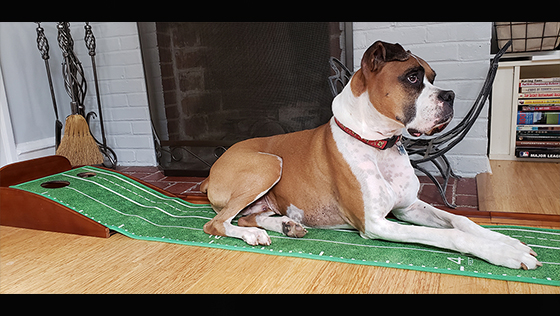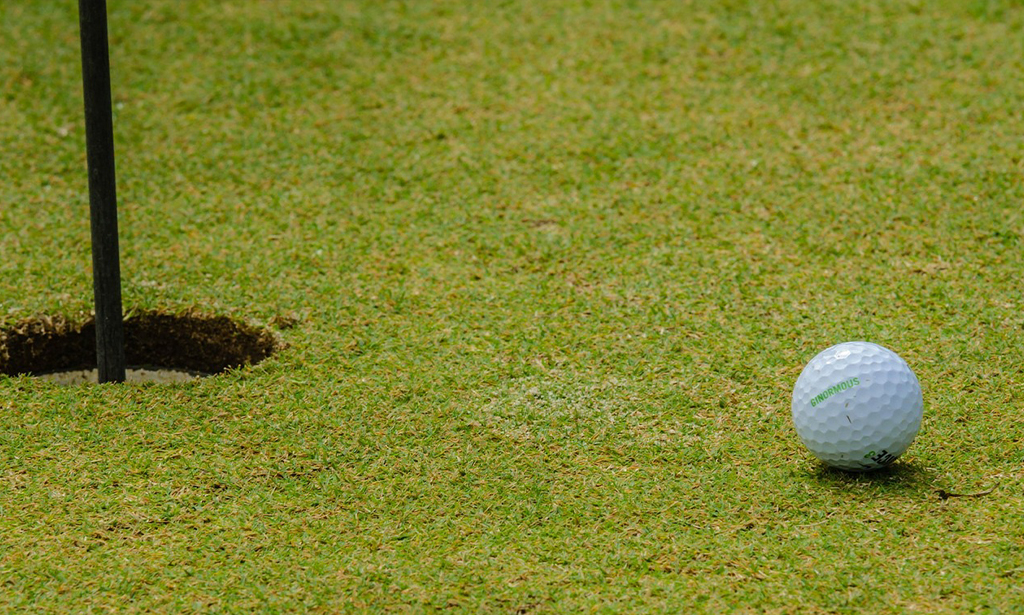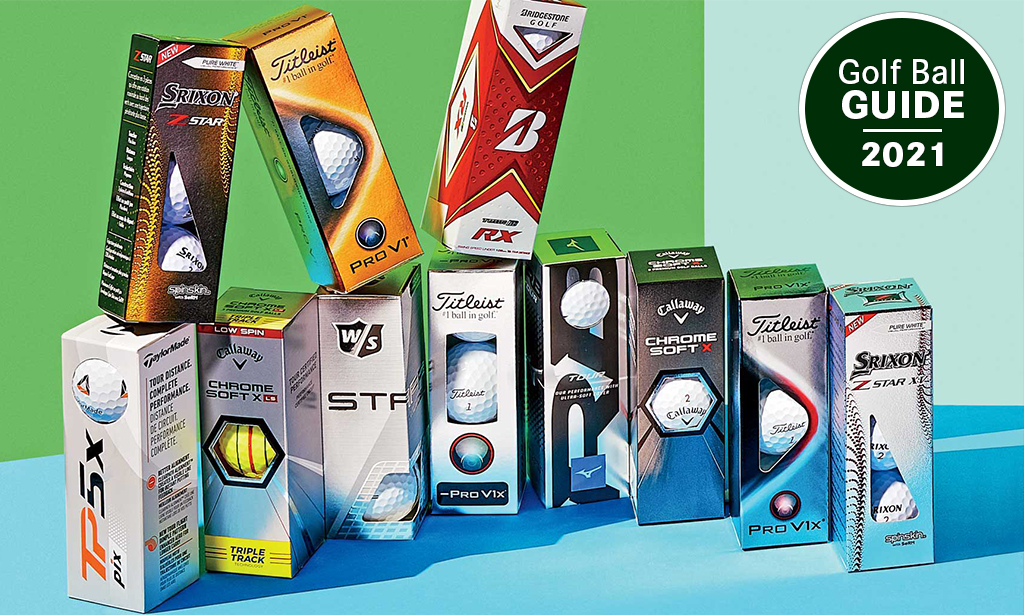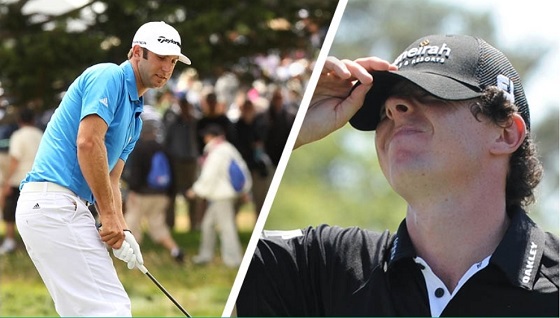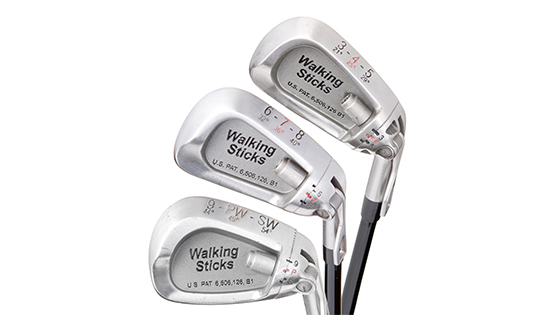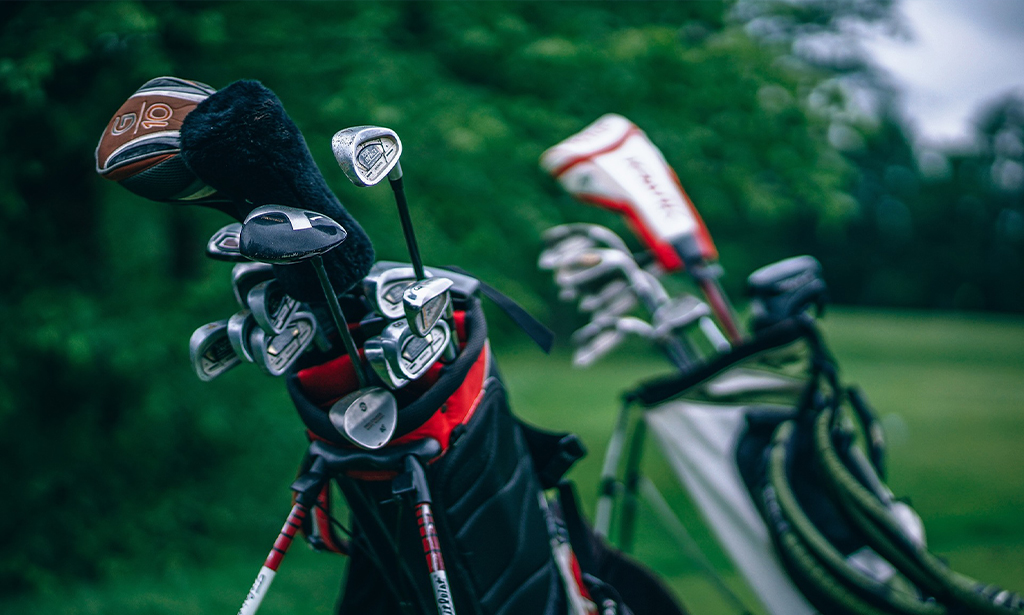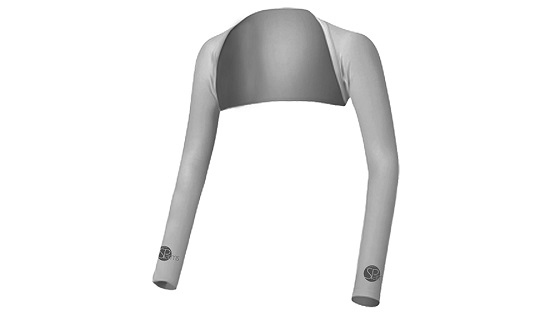Equipment
OHK Sports Interview by Jason Tenzer

“You’re going to like the way you play, we guarantee it” – Oren & Ed.
I met Golf Sply Co at the PGA Fashion in Las Vegas, Nevada earlier this year. There was a line of golf pro’s ready to step up to the practice mat to take their chance at sinking an 8-footer on The Perfect Practice Mat. Well, I got in line as well. I stepped up … waggled the putter a bit (not too much because I didn’t want a slow play penalty) … looked down the mat one last time …then let her go. Immediately, I knew I was off. That’s alright because my purpose of meeting Golf Sply Co was not to make an 8-footer, but to get to the know the team.
This is what I learned from Ed Mileto at Golf Sply Co.
How did you become part of OHK Sports?
EM: When I first moved down to South Florida I was introduced to Oren through a mutual friend. At the time, he had another company that I was brought on to help scale. We worked together on that for about four years and then decided to pivot and launch Golf Sply Co. It was a natural evolution and we’ve been working hard building Golf Sply Co as a team since day one.
What is the Perfect Practice Putting Mat?
EM: The Perfect Practice Putting Mat is an at-home, office, or on the road training aid. Our mat allows you to practice putting anywhere, anytime. We designed our product to teach proper technique and help golfers build confidence and muscle memory that translates on the course. What resulted was the ultimate game-improvement tool that quickly allows any golfer to shave strokes off their score. Basically, we recognized that putting results in nearly half your strokes, but is only given 10% of a golfer’s practice time. We want to change that. Everyone can improve at putting. Using our mat is the quickest and easiest way to do it!
What makes the Perfect Practice Putting Mat better than the other putting mats on the market?
EM: Everyone has seen or used some version of a putting mat if they are into golf.
There are golf studios that have high quality mats for teaching professionals. They are big, bulky, and cost $700+. Not the type of thing most people would want to install in their home. On the other hand, many of the inexpensive models we see aren’t high quality. They don’t roll true and are not a great way to improve your putting. That’s where we come in.
There are a few important things the Perfect Practice Putting Mat does better than any other mat on the market:
– Our mats are made with a unique Crystal Velvet material allowing the golf ball to roll identical to a perfect green. With our Tru-Roll Technology the ball rolls 10-14 on the Stimp depending what surface is under the mat.
– Special alignment aids – when it comes to putting you need your aim to be dead on. Our “train track” target lines are key to teaching you consistent aim.
– The mat has two holes – one regulation and one reduced-size. Spend some time on the smaller hole and trust us, the regulation cup will feel like you’re putting into a bucket!
– A slight uphill slope to the cup breaks the common amateurs habit of leaving putts short.
– It’s extremely portable – the mat rolls up, and the ball return is actually 3 pieces held together with magnets. The entire mat breaks down small enough to throw in the car or take on a plane. It also sets up in just seconds. You can easily take it between the home and the office, or on the road with you if you travel.
– Automatic ball return – this allows you to get in a rhythm and no electricity is required.
What type of response have you been receiving from the golf world?
EM: The response we have gotten from the golf world has been amazing! We couldn’t be more proud of the positive feedback we’ve received. It deeply moves us that we’ve been able to help so many people achieve an improved putting game. We’ve sold thousands of units in only a few short months and are excited to get our product in the hands of more golfers soon. The mat is also trusted by over 25 PGA Tour Pros including Marc Leishman, Joaco Niemann, Charles Howell, Tony Finau and many more.
Malcolm Gladwell says I need 10,000 hours to master a skill. That’s 20 hours a week X 10 years. Do I need to spend 10 years practicing on your Putting Mat to become a better putter?
EM: Absolutely not. What makes our putting mat so special is once you start your practice, you can start noticing changes VERY quickly. In fact, a majority of our users reported dramatic improvement on the greens and lower scorecards within just the first week of using it. One user reported the following results after only three weeks:
“I got the Perfect Practice Mat 3 weeks before my club championship and used it almost every day. Missed nothing under 4 feet all weekend and one putted 8 greens! Ended up tying my best score ever and winning the tournament!!” – Tony F
All it takes is 5-10 minutes a few times a week and we guarantee you’ll shoot lower scores!
Is the Perfect Practice Putting Mat for everyone or just serious golfers?
EM: Our putting mat is for everyone since everyone can get better at putting. If you don’t want to take our word for it see what Marc Leishman had to say:
“It’s awesome mate! For the elite and for kids too, my boys love it. It’s teaching them the correct alignment…Thanks for the mat and looking forward to making more putts!!”
What do you think about anchoring your putter?
EM: That is a tricky rule. We’ll defer to the PGA Rules Officials J
What putter do you have in your bag right now?
EM: Bobby Grace Lo Pro Blade 2018 – I love it! Oren probably has about four putters in his bag/trunk.
Who is a better putter, you or Oren Kantor?
EM: I’m going to say Oren here. However, I do hold the record for 32 consecutive putts made from 8’ on the Perfect Practice Putting Mat!
Tell me something I didn’t ask about.
EM: We’re super excited to announce were going to be launching a host of new products this Fall/Winter that will be available for sale on our website www.golfsply.co. These products, just as our Perfect Practice Putting Mat, will be quality motivated and thoughtfully designed with a fine regard for detail.
To purchase your Perfect Practice Putting Mat, CLICK HERE
Blog
Why Proper Club Fitting Is the Real Game Changer
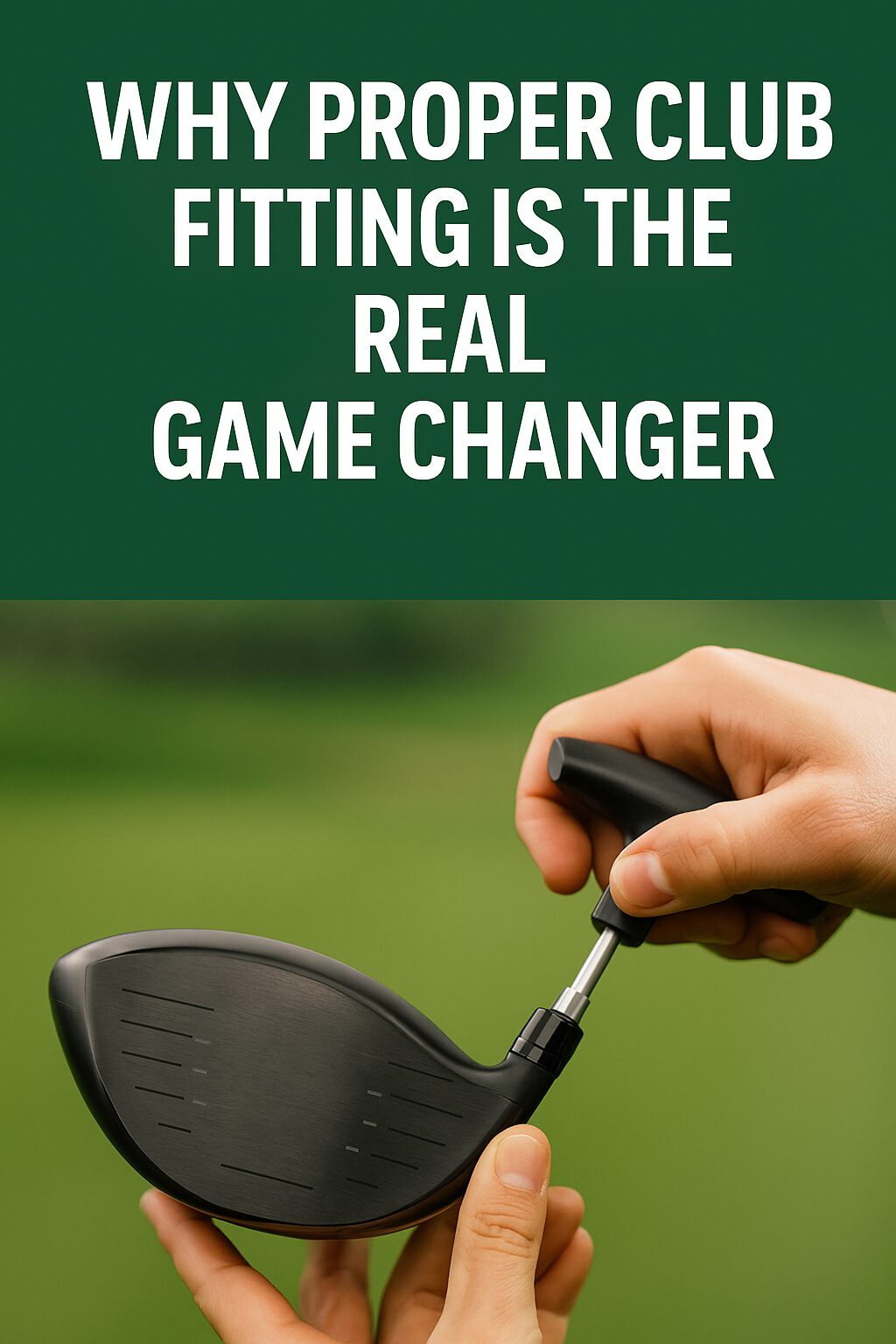
If you’ve ever walked off the 18th green thinking, “It’s not me, it’s the clubs,” well… you might be half right.
As a PGA Professional who’s watched thousands of swings—from scratch players to first-timers—I can tell you that one of the most overlooked keys to better golf is proper club fitting. Not just buying shiny new sticks off the rack, but taking the time to find clubs that are tailored to your swing.
You don’t need a Tour card to get Tour-level precision. Let’s talk about why club fitting matters, what it changes, and how it can truly transform your game from the tee box to the final putt.
The Myth of “Good Enough”
“I’m not good enough to be fit for clubs.”
That’s the most common thing I hear—and it’s completely backwards.
High-handicap golfers have even more to gain from club fitting than low-handicappers. Why? Because the equipment can help you fix ball flight, optimize distance, reduce mis-hits, and build confidence—all without having to reinvent your swing.
Off-the-rack clubs are designed to fit “average” specs. But no two golfers are the same. Length, lie angle, shaft flex, grip size—these all play a massive role in how the club interacts with your body and the ground.
What Happens in a Proper Club Fitting?
At its core, a fitting session is about matching the equipment to your natural swing—not forcing you to swing a certain way to fit the gear.
Here’s what a proper club fitting includes:
1. Interview & Swing Assessment
A certified fitter (or PGA pro like myself) will ask about your current set, ball flight tendencies, common misses, and goals. Then we’ll watch you hit some shots to get a baseline.
2. Launch Monitor Data
Using tools like TrackMan or Foresight, we’ll capture numbers like:
- Ball speed
- Launch angle
- Spin rate
- Club path and face angle
- Carry distance and dispersion
These numbers don’t lie—and they tell us what to tweak.
3. Testing Head & Shaft Combinations
You’ll hit several combinations of club heads and shafts to find what gives you the best performance. One degree of loft or a different shaft flex can make a huge difference.
4. Dialing In Lie Angle & Length
Lie angle affects directional control—too upright, and you might pull shots left; too flat, and you’ll miss right. Club length affects control, consistency, and strike location.
5. Grip Size & Feel
Don’t underestimate this. A grip that’s too thick or too thin can alter your grip pressure and release pattern.
Real Results—Backed by Data
One of my students recently went through a full iron fitting. He was using clubs he bought off the rack 10 years ago. His miss was a push-fade, and he struggled with distance control.
After 90 minutes, a combination of slightly shorter shafts, softer flex, and two degrees more upright lie changed everything. His dispersion tightened by 40%, and he gained an average of 12 yards per club. More importantly—his confidence skyrocketed.
And it wasn’t just him. Across the board, golfers who get fitted:
- Gain more consistent contact
- Reduce directional misses
- Improve distance gapping
- Hit more greens in regulation
- Score better, without changing their swing
The Mental Game Boost
Here’s a secret: it’s not just about numbers. Fitted clubs give you confidence. When you know the tool in your hand is built for you, you swing freer, commit more fully, and stop second-guessing every shot.
Confidence leads to better swings. Better swings lead to better results. It’s a cycle—and it starts with the right equipment.
What About Cost?
Yes, a proper fitting might cost $75–$150 depending on where you go. And yes, custom-fit clubs may be slightly more than what you’d pay at a big box store.
But if you’re already spending time and money on golf, wouldn’t you want to get the most out of it?
A one-time investment in fitting can save you years of frustration—and possibly hundreds spent chasing fixes that won’t work with ill-fitting clubs.
Look—I’ve given thousands of lessons in my career, and nothing changes a golfer’s outlook faster than finally swinging clubs that work with them, not against them.
Whether you’re a 5 handicap trying to fine-tune yardages or a 25 handicap tired of slicing your driver, a proper club fitting can absolutely be a game changer.
You don’t need a new swing—you just need the right tools.
So before you spend another dollar on swing gadgets or tip videos, find your local PGA professional or certified fitter and book a session. Your game (and your sanity) will thank you.
Want more ways to play better without starting over?
Visit ClickItGolf.com every week for practical golf improvement tips, equipment reviews, betting insights, and advice from golfers who live the game every day.
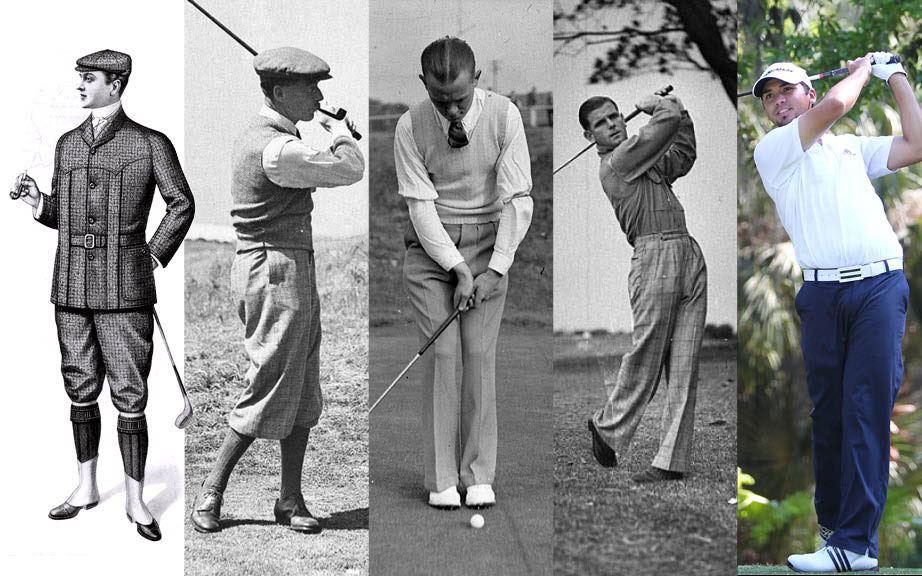
Golf attire has undergone significant transformations over the centuries, evolving from formal, restrictive clothing to today’s stylish, performance-oriented apparel.
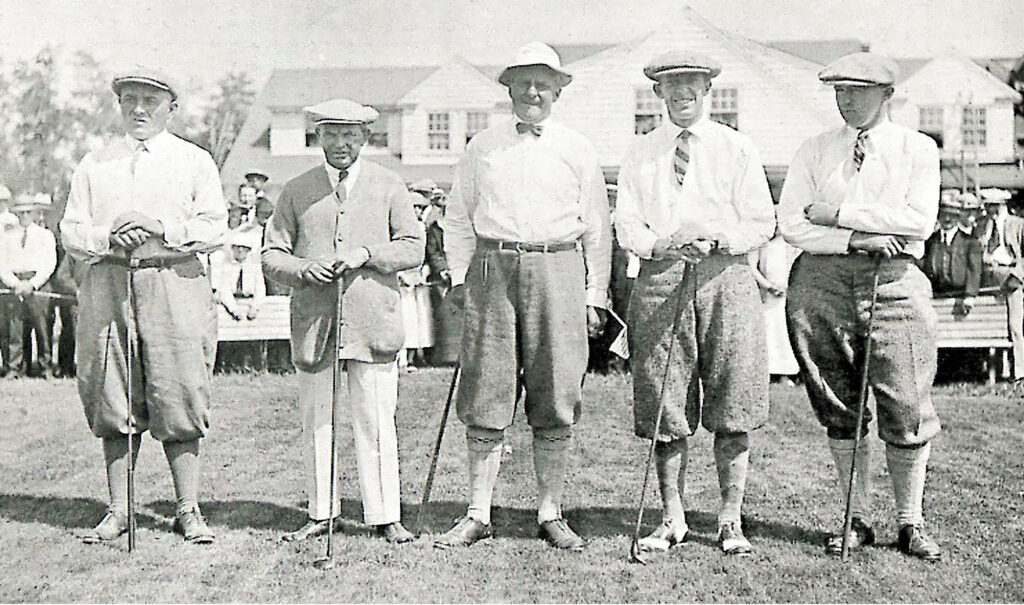
Before 1920
Originating in the cold, windy landscapes of Scotland, early golfers dressed primarily for warmth and protection. Typical attire included full tweed suits, often accompanied by waistcoats and neckties. Knickers, resembling knee breeches, were common, paired with high socks and sturdy leather shoes. Hats varied from pork-pie styles to wide-brimmed designs. While functional against harsh weather, this layered clothing restricted movement, impacting players’ swings.
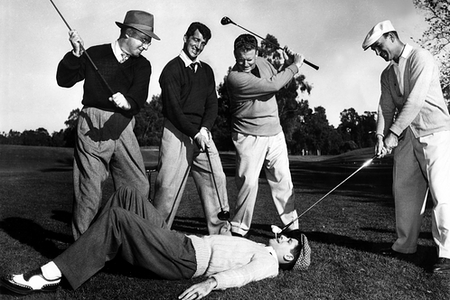
1920s – 1960s
As golf gained popularity in the United States, attire began to reflect contemporary fashion trends. The 1920s introduced plus-fours—knickers extending four inches below the knee—paired with two-toned shirts and, occasionally, ties. In cooler conditions, players opted for knitted wool cardigans or Norfolk jackets. The 1930s saw a shift to lighter fabrics, with short-sleeved knitted shirts and slacks becoming common. Outerwear like the Eisenhower jacket and cardigan sweaters with bell-shaped sleeves allowed greater freedom of movement. Footwear evolved to feature sturdy leather shoes with spikes, enhancing grip on the course.
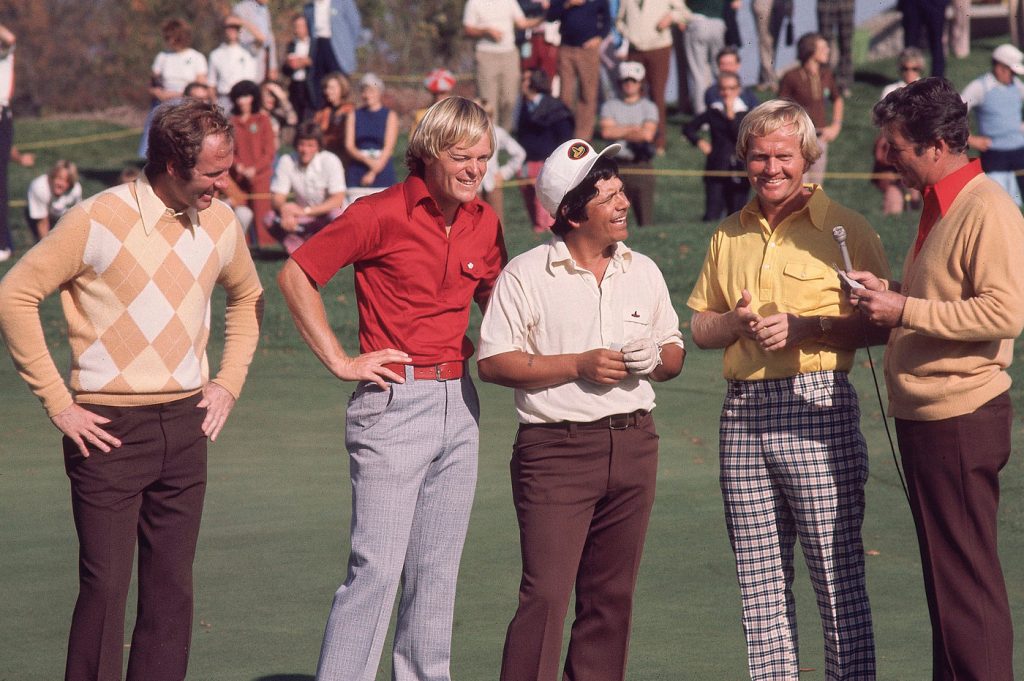
1960s – 2000
The 1960s marked a departure from muted tones, embracing vibrant colors such as greens, blues, and reds. Bold tops contrasted with lighter trousers or shorts, reflecting the era’s fashion sensibilities. Public figures like President John F. Kennedy popularized “Go to Hell” pants—colorful, shorter trousers in eye-catching hues. Recognizing the growing market, brands like FootJoy, Adidas, Nike, Polo Golf Ralph Lauren, and Ashworth launched dedicated golf apparel lines. However, endorsements by celebrity players remained understated during this period.

Since 2000
By the late 1990s, golf had cemented its status among top U.S. sports, leading to lucrative endorsements and a surge in golf club memberships. The game’s evolving dynamics emphasized athleticism, precision, and speed, necessitating advancements in attire. Lightweight, comfortable, and elegant clothing became the norm. Colorful, collared cotton T-shirts paired with tan or khaki shorts or trousers dominated the fairways. Headwear transitioned to pork-pie shapes and baseball caps, while footwear saw a shift from traditional leather to sporty designs from brands like Nike and Adidas.
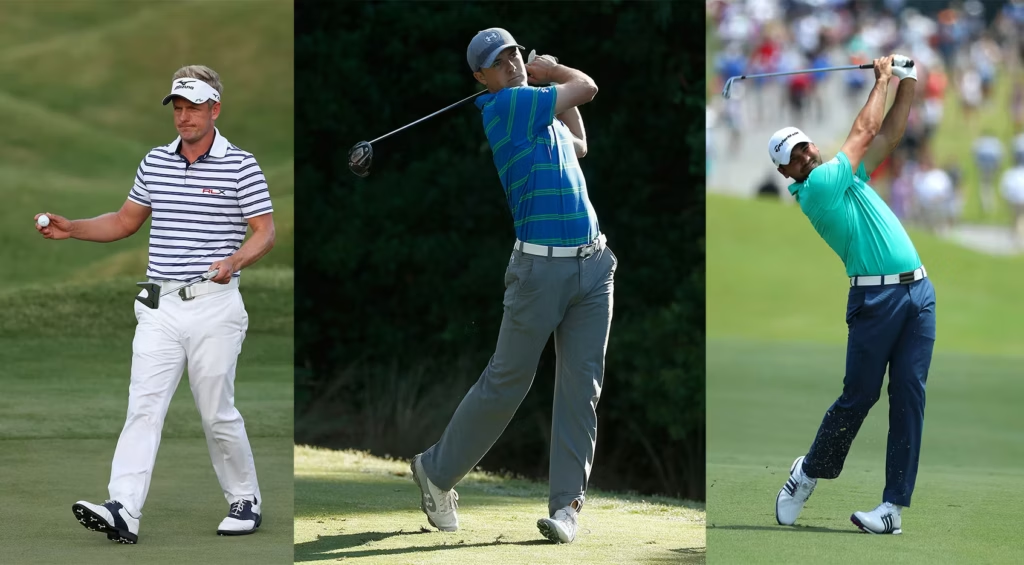
After 2010
The past decade has witnessed a significant shift in golf fashion, influenced by broader cultural trends and technological advancements. The rise of athleisure blurred the lines between sportswear and casual wear, leading to the incorporation of jogger-style pants, hoodies, and stretchy, moisture-wicking materials in golf attire. Brands like Lululemon and Under Armour introduced high-performance golf wear suitable both on and off the course. Collaborations with streetwear labels injected a youthful energy into the sport, attracting a new generation of players. Additionally, sustainability became a focal point, with companies like Reflo producing apparel from recycled materials, reflecting a growing environmental consciousness among consumers. citeturn0search26

This evolution of golf attire mirrors the sport’s journey from its traditional roots to a modern, inclusive game that embraces both style and functionality.
Equipment
Mizuno OMOI Putter Review
New putter alert! Mizuno’s OMOI line dropped, and we got our hands on one. These bad boys are all about weight—heavier heads (think 370g+) for a smoother, pendulum-like stroke. The forged steel feels buttery, and the face milling grips the ball just right for a true roll. We tested the Type 1 on a fast green; lag putts were a breeze, and the stability cut down those annoying wobbles. Priced around $300, it’s not cheap, but if your putting’s been a dumpster fire, this might be the fix. Full review coming—stay tuned!
Mizuno M.Craft OMOI Right Handed Putter
- Forged construction for soft feel
- 1025 Mild Carbon Steel: Soft mild carbon steel for an incredibly soft feel
- Precision CNC Milled: Precisely milled shape and deep milled face for a softer feel and pure roll
- Custom Fit Weight Kit: Includes two 3 gram weights, two 13 gram weights to be interchanged with the two 8 gram fitted weights allowing the M CRAFT to adjust to a variety of desired weightings
-

 Product Review6 years ago
Product Review6 years agoThe Perfect Practice Putting Mat Review by Jason Tenzer
-

 Blog4 years ago
Blog4 years agoLoophole Rule Offers PGA Tour Pros a Mulligan
-

 Blog4 years ago
Blog4 years ago2021 Buyer’s Guide: The Top 10 Value Golf Balls For Distance & Feel
-

 Blog4 years ago
Blog4 years agoGolf Marriage Counselor
-

 Blog6 years ago
Blog6 years ago9 Biggest Chokes Of The Past Decade
-

 Product Review6 years ago
Product Review6 years agoTHE ADJUSTABLE IRONS: WALKING STICKS GOLF CLUBS
-

 Blog4 years ago
Blog4 years agoWhat Your Golf Clubs Say About You
-

 Product Review6 years ago
Product Review6 years agoSparms Product Review – Save the Sunburn for the Beach














